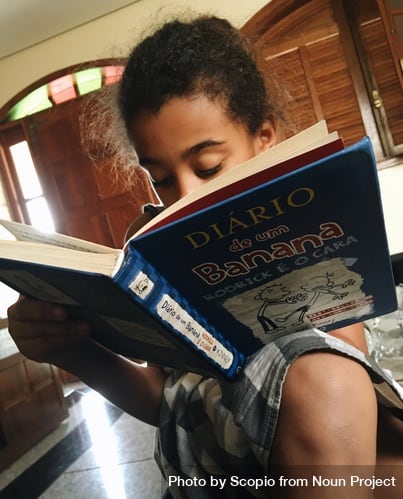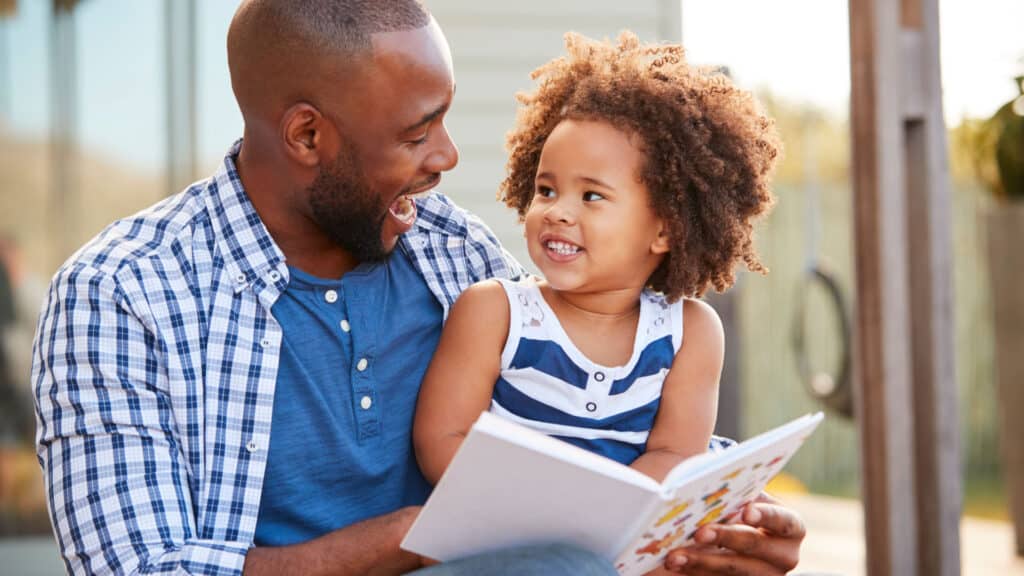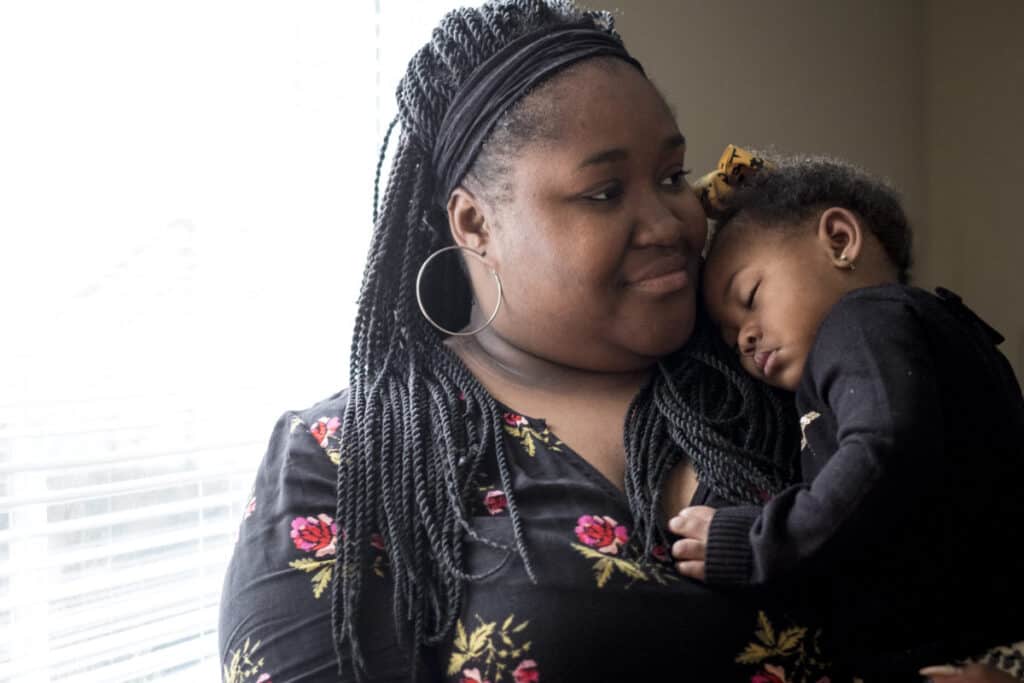When children are in school, the English Language Arts (ELA) classes are designed to help them read and understand complex texts, and express their thoughts in writing.
Complex texts:
Reading complex texts is a skill that everyone needs in order to be successful in their personal life, work life, future education. The texts, or pieces of writing, can be books, articles, instructions, newspapers, food labels, websites and more.
The texts that most students read in high school are not quite as complex as what we need to be able to read in daily life. So it’s important that students at least keep up as much as possible with the grade-level reading.
If your child is struggling with reading, or if they have a learning disability, it may help to learn a bit about literacy development in early childhood. This will help you target the areas where your child has trouble, and learn how to help them.
Why is literacy important?
- Literacy starts with basic skills of reading and writing, but it doesn’t stop there. It includes understanding what you read, expressing. yourself in writing, and using these skills to enrich your life.
- “Using printed and written information to function in society, to achieve one’s goals and to develop one’s knowledge and potential.” From the National Assessment of Adult Literacy
- Read more about why reading and literacy are important
Schools’ expectations for literacy:
The Department of Education’s goal is for students to read at a grade level, even if they need support to do that.
If a student is having trouble with reading, instead of letting them read easier texts, the school should be giving them the support they need to read at grade level!
Components of literacy
Literacy is a complex skill. There are many different parts that students must learn. The overall goal is to understand what you read and express your thoughts in writing. But it starts with sounds and letters.
Literacy development–in early childhood and beyond–involves learning these main components of literacy:
- Phonics and Decoding
- Fluency
- Vocabulary
- Comprehension
- Writing
These components are all needed and they all work together. Each one will help students develop the others. Some students may have a hard time with one or more components, and there are strategies to help.
Learn more about how reading works.
Listen to a reading specialist describe the components of literacy.
Phonics is understanding how letters represent sounds. Decoding is using that knowledge to “sounds out” words
Children should learn these skills in the early grades, starting in kindergarten. By 3rd grade, they should be able to sound out most words that are not too complex. If a child is struggling with this by 3rd grade, they will need some help.
You will also hear that it’s important to learn “sight words”. This means that a child can see a word and know what it is without sounding out the letters. This is important but should not be the only way they learn to read. Research has shown that kids who learn phonics and decoding are more successful readers. (Most schools do teach this, but many do not. Some schools use a “whole language” approach, which is not as effective.)
Why are phonics skills important? These are foundational skills for literacy. Everything else a child learns builds from the ability to connects letters to sounds and sound out unfamiliar words.
How to practice? Listen to your child read out loud. Read aloud with them so they hear you sound out words. Note the kinds of words they have trouble sounding out and practice these. Practice with nonsense words.
Learn more about decoding and phonics.
Fluency is the ability to read smoothly and accurately, with expression
Think of fluency as how a good reader reads out loud. They can read each word without stopping to sound it out. They read about as fast as you might tell the story. Their voice sounds natural and shows the right expression for what the words are saying.
Here’s a way to remember what it includes: Great Readers A.R.E. Fluent.
- A: Accuracy – reading the words correctly
- R: Rate – not too fast, not too slow
- E: Expression – reading like you would talk, not like a robot!
Why is fluency important? Fluency helps with comprehension. It also makes reading more fun and less stressful.
How to practice it? Read out loud together with your child. Or read a sentence first and then have them read it. They can learn from how you use your voice.
Vocabulary means the words a person knows
Children learn new words as they learn to talk. They also learn how to recognize words when they learn to read. The more words a child knows and understands, the easier it is for them to improve their reading and understand what they read.
Why is vocabulary important? If a child knows more words, it helps them with fluency and comprehension. If they know the word “night” for example, they won’t have to stop and sound it out. That lets them read through the rest of the sentence smoothly and understand the whole thought.
How to practice it? Talking more and reading more both help build vocabulary! Talk about the meaning of new words as your child sees them in books or hears them in conversation. Have your child read several books or articles about the same topic. This helps them build a vocabulary about this topic.
Writing is putting ideas into words in print
This how we express our thoughts, tell stories, make an argument, and simply communicate. It’s also the traditional way for students to show what they have learned in school through tests and assessments.
Writing is a complex skill that gets more complex with each grade. Once students know how to write, they are expected to learn to write in an organized way, use more advanced grammar, include evidence, and use many other advanced skills. These skills will be important in adult life, jobs, and further education.
Background knowledge is also important!
If a child is familiar with a topic, it helps them to read and understand. If they don’t know basic facts about what they’re reading, it’s much harder. This is why it’s helpful to know what they’re reading about, to read different books about the same topic, and to discuss these topics together.
Grade-level expectations for literacy
Students are expected to build their literacy skills in each grade.
How do you know what your child should be able to do at their grade level? Each state has its own standards of what skills and knowledge students in each grade should have. These standards are reflected in the state assessments, which students take in grades 3-12. Schools also do regular assessments throughout the year to check that students are on track. (How to track your child’s progress through school assessments.)
Learn about your state’s standards. These resources also include tips on how you can help if your child is not mastering the grade level skills:
- ELA/Literacy skills by state and grade
- Choose your child’s state and grade at the top, from grade 3-8
- Videos of what’s expected in each grade
- Information for grades K-5, middle school, and high school
Louisiana:
Louisiana’s state standards, from Great Schools:
- ELA/Literacy skills by grade
- Choose your child’s grade at the top, from 3-8
- LEAP 2025 Practice Tests
- Scroll down to Practice Tests and pick your child’s grade and ELA (English Language Arts)
- These are the statewide performance assessments for Louisiana schools (Each spring, all Louisiana schools use the LEAP 2025 tests to assess students in grades 3-12. The purpose is to see if they are meeting the expectations for literacy and other subjects, and also to hold the schools accountable for ensuring students make progress.
- This is a more detailed list of the components of literacy, used by the Louisiana Department of Education:
- Foundational skills
- Academic language
- Academic vocabulary
- Fluency
- Complex text
- Close reading
- Volume of reading
- Evidence-based writing
These components all need to be taught together and each one will help students develop the others. For example, a focus on learning academic vocabulary can help students read more complex text. But close reading of complex text can also help build their academic vocabulary.
Does my child have a learning disability like dyslexia?
Some children have trouble learning to read because of a learning disability. Dyslexia is one of the most common learning disabilities, but it’s one of many different kinds. (Read more about learning disabilities and what to do if you think your child may have one.)
What is dyslexia?
- It’s a common learning disability that affects 5-10% of people
- It makes it hard to learn the connection between sounds and letters. (This is called phonemic awareness)
- It makes it harder to learn to read, to read fluently, and to understand what you read
- Having dyslexia does not mean a person is not smart or not trying! It’s the way their brain is wired
The goods news is that there are teaching techniques that specially trained teachers can use to teach dyslexic students to read. The key is to find out if that’s the reason for your child’s struggles, and get the services of a trained teacher.
My child is struggling with reading…Could it be Dyslexia?
Good literacy skills are a critical foundation for much of what your child will need to do–in school and in life! This why it’s important to support literacy developments in early childhood. If your child is struggling with learning to read, find out how you and the school can help support their learning.



